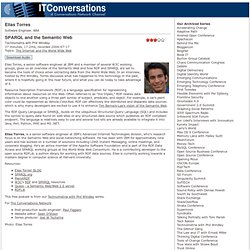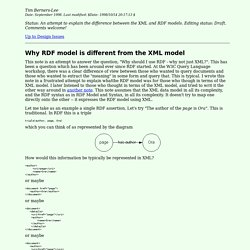

Best Practice Recipes for Publishing RDF Vocabularies. W3C Working Group Note 28 August 2008 This version: Latest version: Previous version: Editors: Diego Berrueta, Fundación CTIC Jon Phipps, Cornell University Library Previous Editors: Alistair Miles, STFC Rutherford Appleton Laboratory Thomas Baker, Goettingen State and University Library Ralph Swick, W3C Copyright © 2008 W3C® (MIT, ERCIM, Keio), All Rights Reserved.

Abstract This document describes best practice recipes for publishing vocabularies or ontologies on the Web (in RDF Schema or OWL). Status of this Document This section describes the status of this document at the time of its publication. This document was prepared by the Semantic Web Deployment Working Group (SWD), based on previous work by the Semantic Web Best Practices and Deployment Working Group (SWBPD). This document is a Note documenting some best practices. Comments are welcome and may be sent to public-swd-wg@w3.org; please include the text "comment" in the subject line. Table of Contents Introduction Choosing a recipe Recipe 1. Tag URI. IT Conversations: Elias Torres. Elias Torres, a senior software engineer at IBM and a member of several W3C working groups, gives us an overview of the Semantic Web and how RDF and SPARQL are set to become the tools of choice when extracting data from the World Wide Web.

In an interview, hosted by Phil Windley, Torres discusses what has happened to this technology in the past, where it is hopefully going in the near future, and what you can do today to take advantage of it. Resource Description Framework (RDF) is a language specification for representing information about resources on the Web. Often referred to as "the triples," RDF relates data objects to one another using a three part syntax of subject, predicate, and object. For example, a car's paint color could be represented as Vehicle.Color.Red. RDF can effectively link distributed and disparate data sources which is why many developers are excited to use it to enhance Tim Berners-Lee's vision of the Semantic Web.
Semantic Web: Why RDF is more than XML. Up to Design Issues This note is an attempt to answer the question, "Why should I use RDF - why not just XML?

". This has been a question which has been around ever since RDF started. At the W3C Query Language workshop, there was a clear difference of view between those who wanted to query documents and those who wanted to extract the "meaning" in some form and query that. This is typical. I wrote this note in a frustrated attempt to explain whatthe RDF model was for those who though in terms of the XML model. Let me take as an example a single RDF assertion. Triple(author, page, Ora) which you can think of as represented by the diagram How would this information be typically be represented in XML? <author><uri>page</uri><name>Ora</name></author> or maybe <document href="page"><author>Ora</author></document> <document><details><uri>href="page"</uri><author><name>Ora</name></author></details></document> The XML Graph <v><x><y> a="ppppp"</y><z><w>qqqqq</w></z></x></v> What is the author of page?